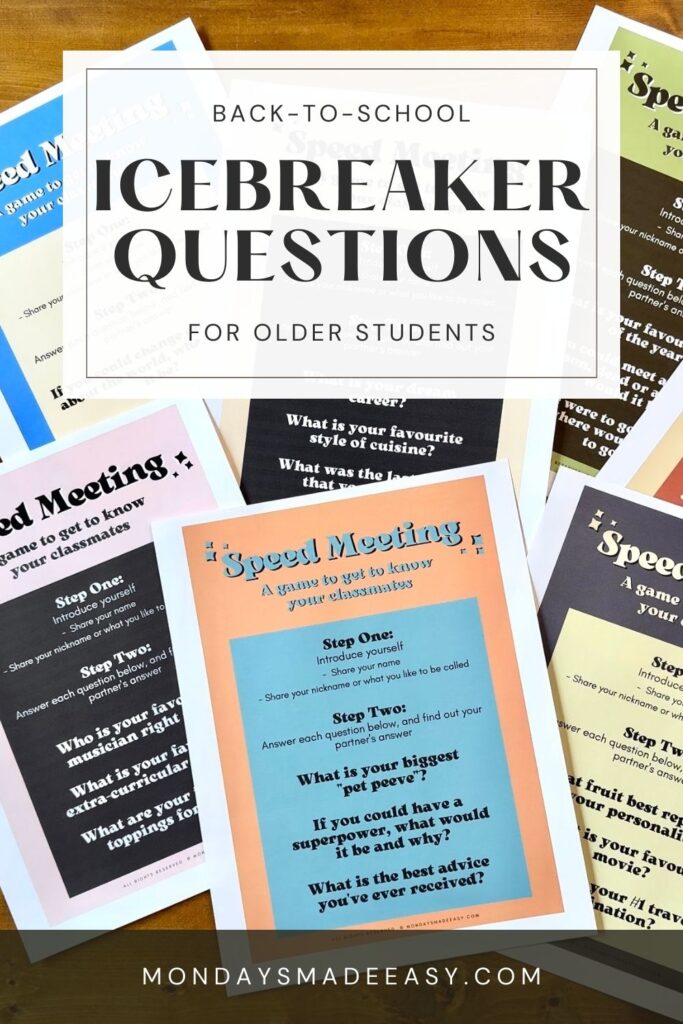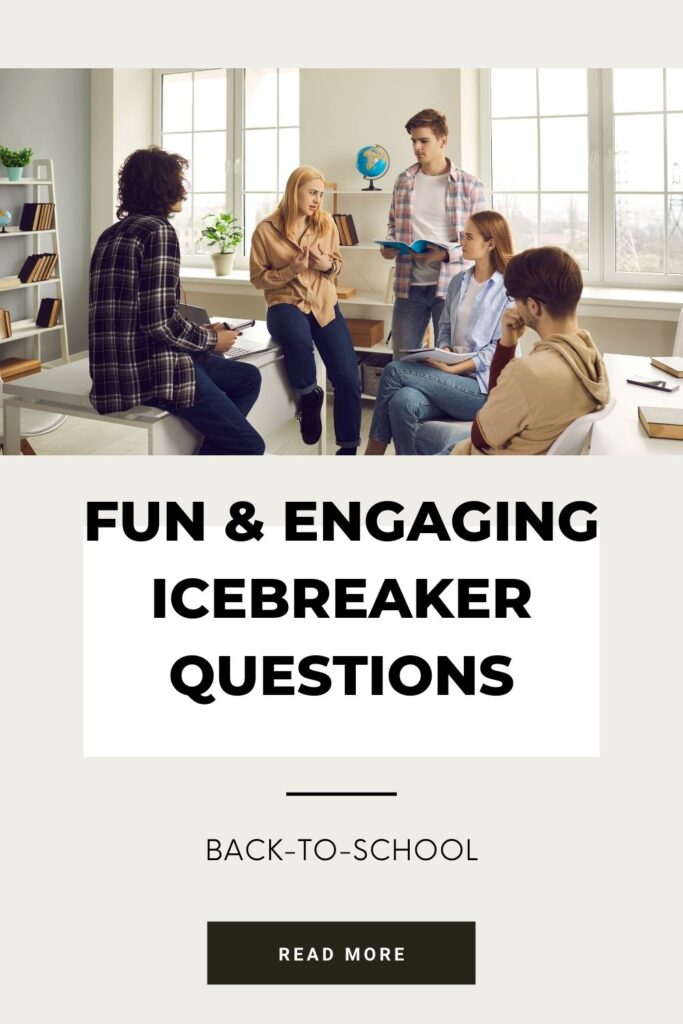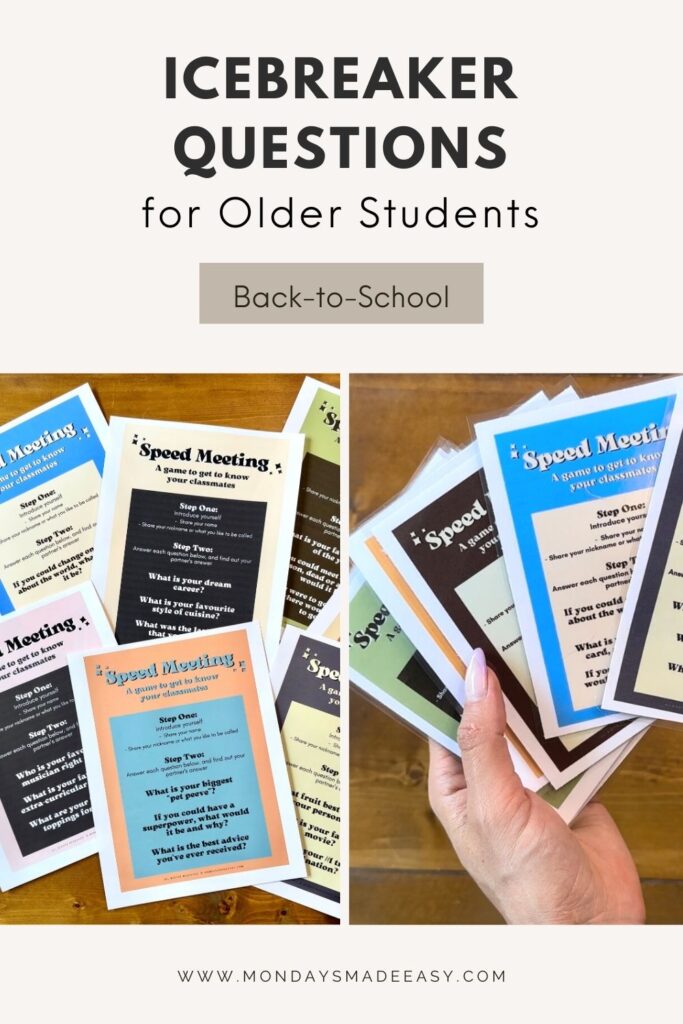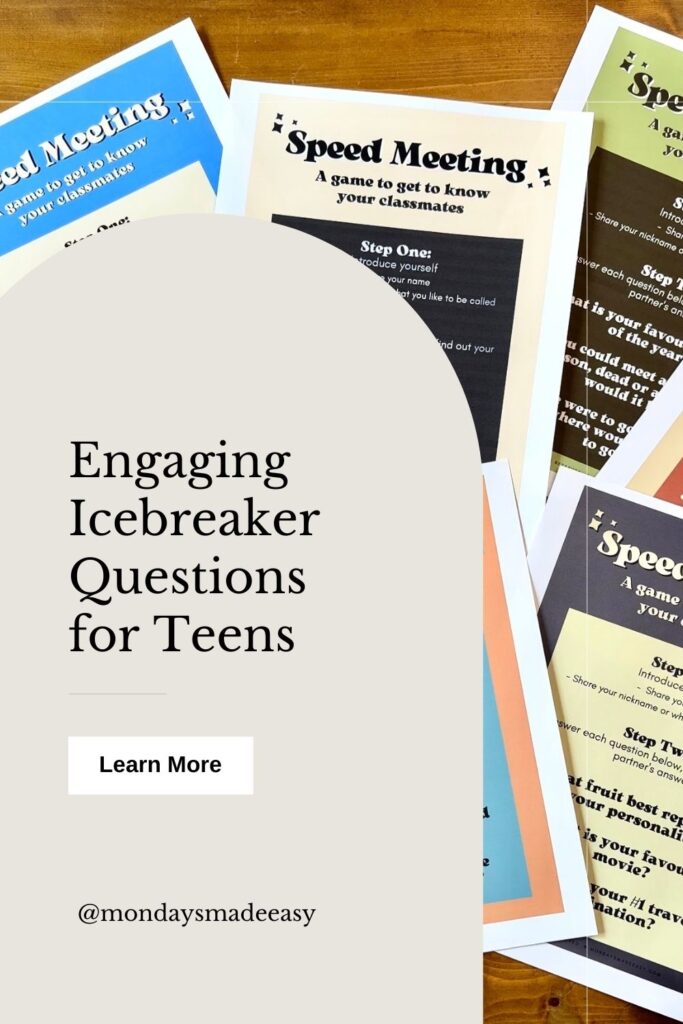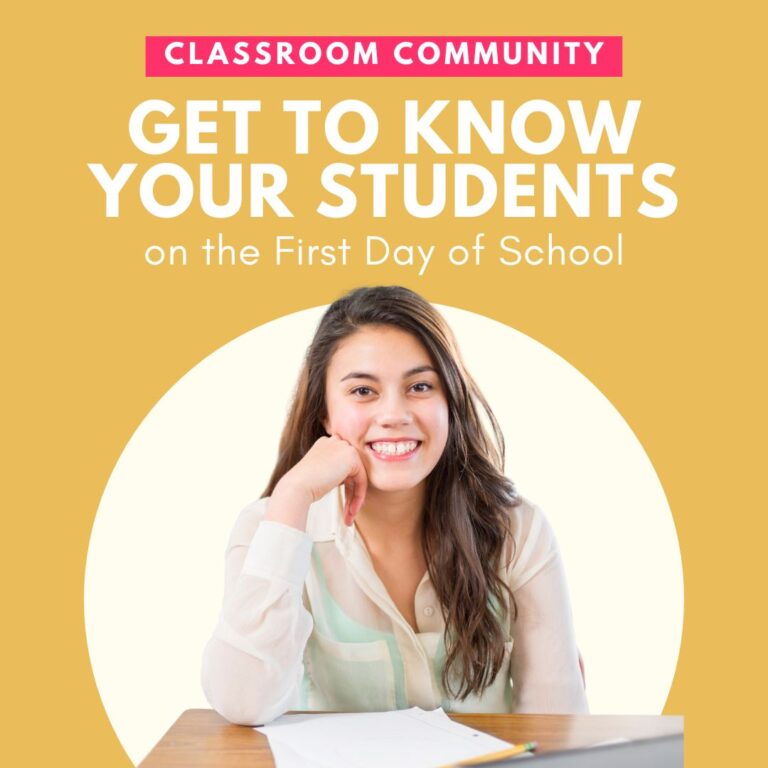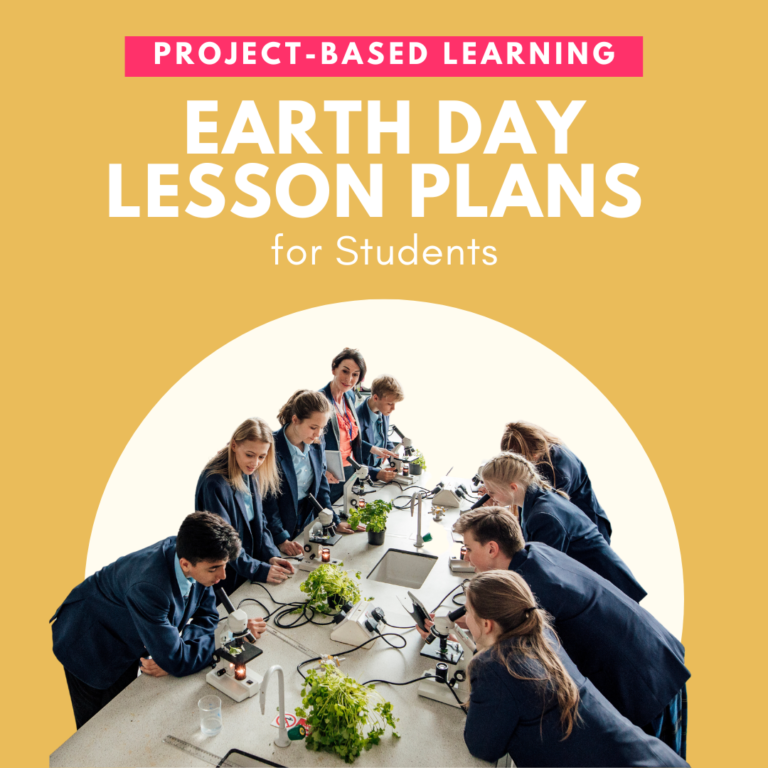Searching for icebreaker questions for teens can be tricky. A lot of questions on the internet are overly simplistic for teenagers, while others might not be appropriate for a school setting. This blog post explores fun icebreaker questions for students, as well as several ways to play icebreaker question games in your classroom.
Year after year, icebreaker questions are one of the most engaging back-to-school icebreakers for older students. They’re guaranteed to set a positive, conversational tone in your classroom. My hope is that after reading this blog post, you’ll be able to implement a number of icebreaker question games with your students. You’ll also have a number of fun icebreaker questions for teens in your back pocket!
What are good high school icebreaker questions?
The best icebreaker questions for high school are a delicate balance between engaging and appropriate. When compiling a list of high school icebreaker questions, avoid controversial, polarizing, or political topics that could lead to unnecessary tension. Similarly, steer clear of questions that are overly personal.
However, be mindful not to make questions too simplistic or cringe-worthy. If you’ve taught teenagers before, you can probably already picture the eye rolls! The ideal high school icebreaker questions spark genuine conversations, encourage students to share their experiences and interests, and create an inclusive atmosphere.
These icebreaker questions are designed to appeal to the interests of older students. Some examples include:
- What is your dream career?
- How do you feel about social media?
- What is your zodiac sign?
- What is your biggest “pet peeve”?
- What is the best advice you have ever received?
This icebreaker game includes 30 icebreaker questions for teens in total. They come in both handout and card game formats. They’re sure to get your students engaged in meaningful conversation!
Fun Icebreaker Games for Back-to-School
Have you heard of the game “We’re Not Really Strangers?” This game is designed to bring people closer together. It invites participants to engage in meaningful conversations. “We’re Not Really Strangers” gained immense popularity on social media in recent years. The popularity of this icebreaker question game goes to show that people love the opportunity to get to know one another with the help of some thought-provoking questions.
If you haven’t heard of this game, you’ve probably played some variation of it. Icebreaker question card decks are hugely popular and appeal to a wide range of audiences. Before investing in any deck, it is worthwhile to make sure that the questions are suitable for school. As engaging as these games might be, they are often not designed for the classroom. This is why I developed an icebreaker question card deck for students; it includes school-appropriate icebreaker questions for teens that are highly engaging without being too personal or controversial.
How to Play Icebreaker Question Games in the Classroom
There are several ways to set up icebreaker question games in the classroom. You can play a game of “Speed Meeting,” break students into groups, or use icebreaker questions as attendance prompts during your roll call.
“Speed-Meeting”
For a high-energy, fast-paced game of “Speed Meeting,” set up different stations around the room. To determine how many stations you need, you will need to take into account how many students are participating and divide that number into two. These stations can be set up in a circle, and each station will have one handout with icebreaker questions. You can write down a list of icebreaker questions for students or use these pre-made handouts.
Allow 2-3 minutes for students to discuss the questions at each station. Once the time is up, you can rotate the stations by instructing either the students on the inside or on the outside of the circle to all rotate in the same direction. By the end of the game, students will have had the opportunity to converse with many of their peers!
Attendance Prompts
For attendance roll-call prompts, you can introduce an icebreaker question at the start of each class. Instead of having students respond with “here,” they can respond with their answer to the question. This is a great icebreaker activity for English Language Learners as it encourages conversation in a low-risk environment!
Small Groups
Finally, you can break students into groups and have each group read and answer icebreaker questions. This option is a more laid-back approach to spark discussion in your classroom.
There are plenty of ways to group students together. If you are beginning literature circles with your students, you can use these as a warm-up activity for each group. If you teach freshmen, you can make groups that represent students from different feeder schools. For teachers in specialized subjects like music, you may wish to group students based on the type of instrument they are playing or their favorite musical influences.
Fun Icebreaker Questions for Teens
Finding relevant icebreaker questions for teens can be a challenge, but it is well worth the effort! By selecting thought-provoking yet respectful questions, you can set the stage for meaningful connections and a positive social environment throughout the school year. For more back-to-school icebreaker ideas, check out this blog post.

